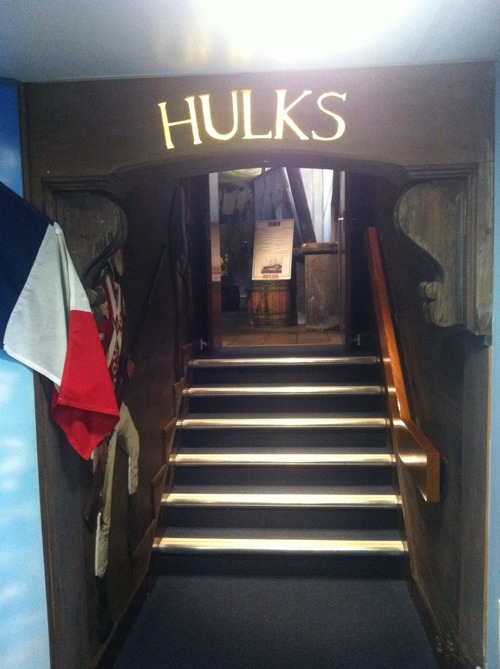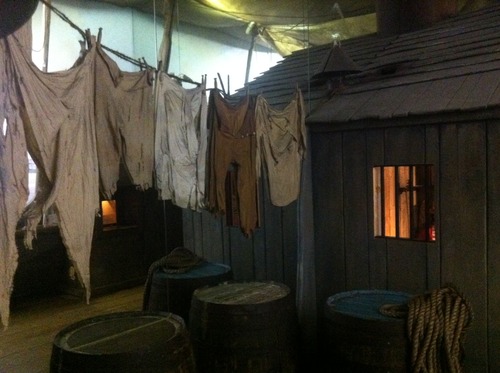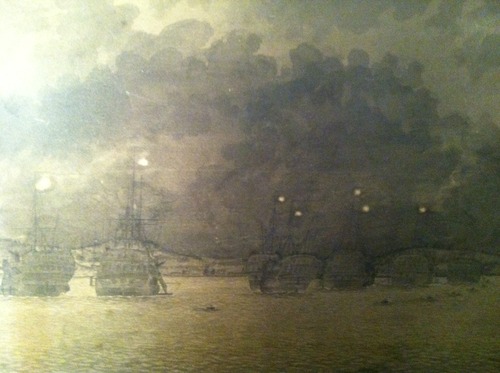Prison Hulks Exhibition, Guildhall Museum
Rochester, Kent, July 2014

The Guildhall Museum in Rochester has a section dedicated to the prison hulks which were in operation during the Napoleonic wars and were used to house predominantly French and American prisoners of war. The exhibition is structured like a prison hulk and ranges over three floors, upper deck where the guards quarters were found, the lower deck and the orlop deck where the prisoners slept.

The themes of the exhibition are also divided nicely into three – firstly, the bone and straw work produced by inmates which, like, all good British prison exhibits serves to demonstrate the abilities and work ethic of those incarcerated (when they put their minds to it and weren’t busy breaking the law or fighting against the English), thus reminding us that prison is all about rehabilitation and, obviously, the production of saleable goods.

Second, we have the emphasis on the inhumanity of the hulks (the black hole – solitary – has been faithfully recreated and it is possible to buy ‘hulk’ rats in the gift shop). As the audio commentary tells us, there were those who would have rather seen their children dead before they went on board a prison hulk. The irony of such exhibits is they are intended to reassure school children that life has become so much better and people so much kinder. A more honest appraisal might have involved the juxtaposition of images of today’s prison ships. See Loic Wacquant’s account of ‘The Saga of the New York Penal Barges’ in Punishing the Poor (2009), p.124-5
‘In March 1997, one of these barges, the Bibby Resolution, completed a 3,000 kilometre journey to dock at Portland Harbor, near Weymouth in Cornwall, where it was promptly rebaptized Her Majesty’s Prison Weare: the former British troop transport vessel had been purchased back by the UK prison service to serve as a floating dormitory for 500 “low-security” inmates, in spite of protests by the representatives and inhabitants of its new port of call. This is because, having acceded to the rank of showpiece and pilot of the “Americanisation” of penal policy in Europe, England was experiencing unprecedented carceral hyperinflation – its confined population had leaped 50 percent in just four years to reach 62,000 that year – and it no longer knew where to store its convicts. The return of the Bibby Resolution to its original homeland was a boon to the European shipping company that had bought it from New York City for less than one million dollars and resold it to the British government for eight million. But the real turkey of this maritime-cum-penal farce was the City of New York, which had acquired and outfitted the barge for a total exceeding $41 million.’
Finally, we have the technical details of life on a ship, the construction and fitting-out of prison hulks, paintings of the hulks viewed from the shore and so on.

All this has less to do with the specific function of the ships and more an affirmation of the romanticism of life at sea, all life at sea, and the imperialism which legitimised the use of prison hulks within its fleet. How might we compare this to the justification of spaces like Guantanamo which lie outside the official territory of a nation or state, spaces which by dint of their para-juridical status endorse all manner of atrocities deemed impossible or, at the very least, problematic within the physical and legal borders of such territories?


